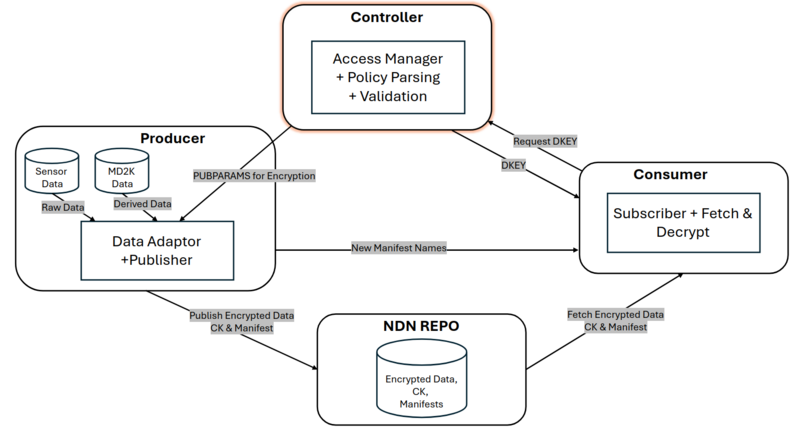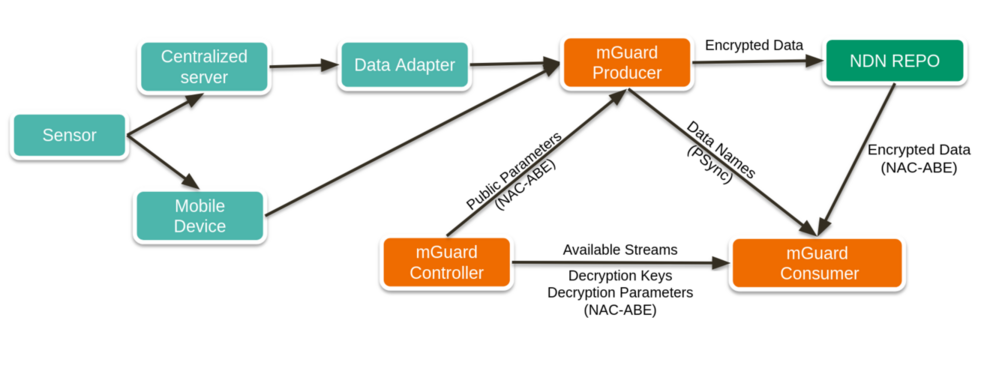Architecture » History » Revision 22
« Previous |
Revision 22/25
(diff)
| Next »
Suravi Regmi, 11/21/2025 08:32 PM
Architecture¶
This page provides a high-level architectural view of MGuard.
It summarizes how the main modules interact, how data flows through the system, and how security and access control are enforced at a system level.
Detailed module-level behavior, policy processing, manifest handling, and sequence diagrams are provided in the linked Architecture Details page.
System Architecture Overview¶
MGuard follows the design described in the paper’s Design Overview (§3.1). :contentReference[oaicite:0]{index=0}
A service instance consists of:
- a data source (MD2K repository or sensor-generated streams),
- a Producer that adapts and publishes mHealth data into NDN,
- a Controller responsible for access policies and requester validation, also contains Attribute Authority (AA) issuing decryption keys,
- an NDN Repository storing encrypted data, content keys, and manifests,
- one or more Consumers subscribing to data streams they are authorized to access.
Data requesters obtain trust anchors and certificates, subscribe to data streams, receive manifest notifications, and fetch/decrypt data objects.
High-Level Architecture Diagram¶


TODO (Architecture Details)¶
End-to-end workflows (overview)
Publication workflow
(Adaptor → Publisher → NAC-ABE encryption → Repo → PSync announcement)
Authorization workflow
(Consumer → Controller → DKEY issuance)
Retrieval workflow
(PSync update → manifest fetch → data/CK fetch → decrypt → callback)
Black box components
NAC-ABE → “encrypt(data, attributes) → encrypted data + CK”
PSync → “publish(manifestName) → notify subscribers”
Updated by Suravi Regmi 24 days ago · 25 revisions